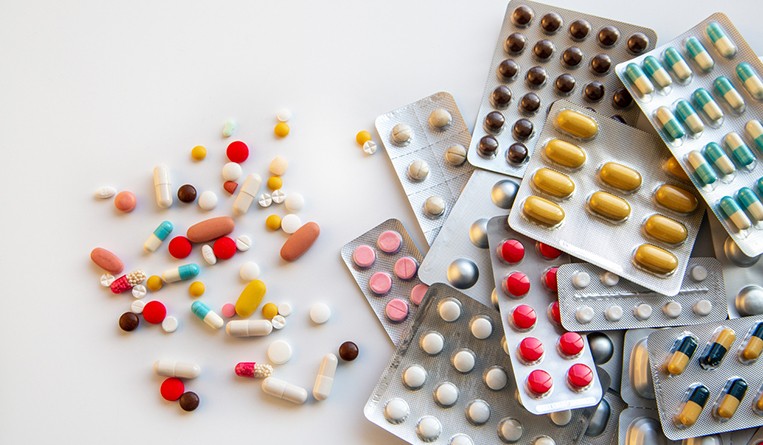When it comes to naming drugs, there’s more to consider than simply coming up with a snappy trade name. Ling Zhao and Qin Li explain how to navigate the three types of commercial identification of pharmaceuticals: the generic name, the trade name and the trademark, all of which are different but also interrelated.
Drugs are a special category of commodities that concern public life, health and safety. The registration of drug trademarks is an important means for drug enterprises to protect the intellectual property rights of drugs and plays an important role in ensuring the safety of clinical drug use and safeguarding the legitimate rights and interests of the public. The commercial identification of a drug mainly includes three types: the generic name of the drug, the trade name of the drug and the trademark, which are different and interrelated.
The generic name of the drug shall be used in accordance with the provisions of the Drug Administration Law and the Regulations on the Administration of Drug Instructions and Labels and shall not be registered as a trademark.
With regard to generic drug names, Article 29 of the Drug Administration Law of the People's Republic of China, which took effect in December 2019, stipulates that “a drug name included in the national drug standards shall be a generic drug name. Where it has been used as the generic name of a drug, the name may not be used as a trademark of the drug”. Article 8 of the General Provisions of the Principles for Naming of Generic Names of Drugs in China stipulates that “neither the generic name of a drug (including INN) nor the English or Chinese translation of its special stem shall be used as a trade name or be used to form a trade name for the purpose of trademark registration”. INN names are from the International Nonproprietary Names list; each name is globally recognized and is public property.
The generic name of a drug reflects the difference between different drugs, is stipulated by the specialized agency for drug administration, is mandatory and binding and belongs to the public domain. On the other hand, a drug trademark is used to distinguish between different drug manufacturers and has the attribute of private rights. The law prohibits the registration of generic names of drugs as trademarks in order to avoid the monopoly of public interests and protect the public interests of society. Considering that the generic name of a drug refers to a drug or a drug ingredient for the treatment of a specific disease, its registration and use as a trademark will mislead the relevant public, thus confusing the pharmacological effects of the product and affecting drug safety. The registration of trademarks containing the INN stem will also limit the creation of new INNs, which will not be conducive to the acquisition of new generic names for new drugs, and will be unfair to the new drug research and development enterprises.
How to determine generic names and especially generic names of drugs? The generic name of drugs in China refers to a legal name for drugs formulated by the Pharmacopoeia Commission of the People’s Republic of China in accordance with the Principles of Naming Generic Drug Names of the People’s Republic of China and recorded with the Ministry of Health of the People’s Republic of China. It is a generic name for certain kinds of drugs with the same composition or formula.
In the administrative litigation of trademark review of refusal against the mark “OGIVRI” No. 33152593, the court found that the English combination “OGIVRI” is not an inherent vocabulary and has no specific meaning. It is only a trade name of the drug trastuzumab created by the trademark applicant. Multiple pharmaceutical companies are producing and selling anti-cancer-targeted drugs with trastuzumab as the main active ingredient, and the applicant only produces one of them. Therefore, trastuzumab should be the generic name of this type of drug, while “OGIVRI” is only the trade name of the drug produced by the trademark applicant, i.e. the plaintiff in this case.
When applying for marketing approval of the new drugs, the drug manufacturers may formulate drug trade names according to their needs. The trade name of a drug must comply with the naming principles of the trade name of a drug published by the State Drug Administration.
On March 15, 2006, the former State Food and Drug Administration issued the Notice on Further Regulating the Administration of Drug Names and the annex Principles for the Naming of Drug Trade Names. According to the notice, drug trade names should not have exaggerated publicity or imply therapeutic effects. They should comply with the Principles of Drug Trade names and be approved by the State Food and Drug Administration before they can be used. The Principles of Drug Trade Naming include not using words that are not allowed to be used in trademarks. In addition, according to the notice, except for new chemical structures, new active ingredients, and required products holding compound patents, other varieties are not allowed to use trade names.
From the above administrative orders and regulations, it can be seen that a drug trade name is a name given by a drug manufacturer for a new drug, which shall not be the same as the generic name of the drug and its constituent elements. From the point of view of its function, it has a certain role in indicating the source of the drug. From the point of view of its naming rules, it shall comply with the provisions of the trademark law and shall not contain words that exaggerate the publicity or describe the characteristics of the product. Nor shall it be the same or similar with the drug trade name of others, which is quite common with the composition of the trademark. In practice, drug manufacturers often register their approved drug trade name as a trademark to obtain protection under the trademark law.
However, the drug trade name is still a drug name by nature, and the drug trade name that has not obtained the trademark registration shall not be used as an unregistered trademark on drugs. As the Supreme People’s Court held in the administrative judgment in Southwest Pharmaceutical Co., Ltd. v. Trademark Review and Adjudication Board of the State Administration for Industry and Commerce and Bayer Consumer Care Co. on the retrial of the No. 631613 “San Lie Tong” trademark dispute, “China’s Drug Administration Law prohibits the use of unregistered trademarks in drugs. When Southwest Pharmaceutical Company applied for the registration of ‘San Lie Tong’ trademark and the trademark was approved for registration, ‘San Lie Tong’ could not legally be an unregistered trademark of ‘Sanlietong tablets’.”
The conflicts between drug trade names and trademarks shall be resolved in accordance with the relevant provisions of the trademark law.
Although drug trade names play a similar function of distinguishing market entities as other industrial and commercial signs in the market due to their own characteristics such as recognizability, the biggest difference between drug trade names and trademarks lies in that although drug companies obtain the right to use after registering the drug name with the drug regulatory department, the right to use is not a specific civil right created by law. The exclusive right to use a registered trademark is a civil right protected by law, including the exclusive use right and the prohibition right, which has the right attribute once registered.
Considering that the drug trade name has the characteristics of identifying different drugs and is similar to other industrial and commercial marks, its value comes from its distinguishing function and the commercial reputation of the industrial and commercial subjects it marks. The protection of industrial and commercial marks must be premised on the fact that they have a certain degree of popularity. The Supreme People’s Court in Shanxi Kangbao Biological Products Co., Ltd. v. Beijing Jiulong Pharmaceutical Co., Ltd. and the Trademark Review and Adjudication Board on the administrative dispute of the No. 1592518 “KE LI TING” trademark held that according to the relevant administrative rules and administrative normative documents, the state implements the corresponding administrative management system for the use of drug trade names, but in addition to obtaining civil rights in accordance with other laws, whether the drug trade names approved by the drug administration department produce civil rights and interests depends on its actual use; the drug trade names that are actually used and have a certain influence may be protected by law as civil rights and interests.
The Beijing High People’s Court also reiterated the above view in the administrative judgment on the trademark dispute for the No. 5430775 “PHUDICIN” trademark, that is, after the registration of the trade name of the approved drug, the applicant of the name does not necessarily enjoy the corresponding civil rights and interests. It is only after the applicant has accumulated a certain degree of goodwill and gained a certain degree of popularity in the market through its use of the drug trade name that the applicant can enjoy the corresponding civil rights and interests.
Thus, the registration of a drug trade name does not directly generate the prior right to exclude others from using the same or similar trademark on the same kind of goods. In the event of a conflict between the prior drug name and the trademark, whether protection can be requested in accordance with the provisions of Article 32 of the trademark law, the premise is that the drug name is used earlier and has gained a certain popularity.
Drug trade names should be registered as trademarks for protection, and drug enterprises should strategically register their trademarks, and conduct defensive registrations as appropriate.
Since the registration of drug trade names does not directly produce the prior right to exclude others from using the same or similar trademarks on similar goods, civil rights and interests need to be generated on the premise of the drug trade names being used and gaining certain popularity first, for drug enterprises, the registration of drug trade names as trademarks is a necessary move to avoid squatting and obtain adequate protection.
In practice, when drug companies apply for the approval of new drugs, they often first apply for the registration of several drug trademarks that may be used and select the appropriate trademark from the registered trademarks to submit the drug trade name registration, which, on the one hand, eliminates the need to make corrections due to non-compliance with the trade name of the new drug that may lead to delayed approval, and on the other and avoids the conflicts of rights with others’ trademarks.
In addition, drug companies facing infringement of their trademark rights are limited in the amount of advertising evidence due to the restrictions imposed by laws and regulations on pharmaceutical advertising. At the same time, due to the specific consumer groups of drugs, functional uses, sales channels and production departments of drugs are also relatively special, to prove that there is a correlation between such goods and other goods or services, and then prove that the registration and use of the trademark in dispute is easy to mislead the public and damage the legitimate interests of the trademark right holder is relatively difficult. There is a certain difficulty in drug trademark rights protection. Therefore, it is suggested that drug enterprises, when applying for trademark registration, can appropriately expand the scope of goods and services, and carry out defensive registration in the related goods and services category, such as “dietary nutritional supplements”, “medical apparatus and instruments”, “retail and wholesale of pharmaceutical, veterinary and sanitary preparations and medical products”, “medical care”, “rehabilitation centers” and “guidance on diet nutrition”.
The fact that the generic name of a drug shall not be registered as a drug trademark is not only a consideration from the perspective of consumers’ drug safety, but also a way to ensure that the name of a drug in the public domain shall not become anyone’s private right. Drug trade names are important identifiers for consumers to distinguish between different drugs and registering them as trademarks not only protects the legitimate rights and interests of pharmaceutical companies, but also avoids market confusion and maintains a fair market competition order.










